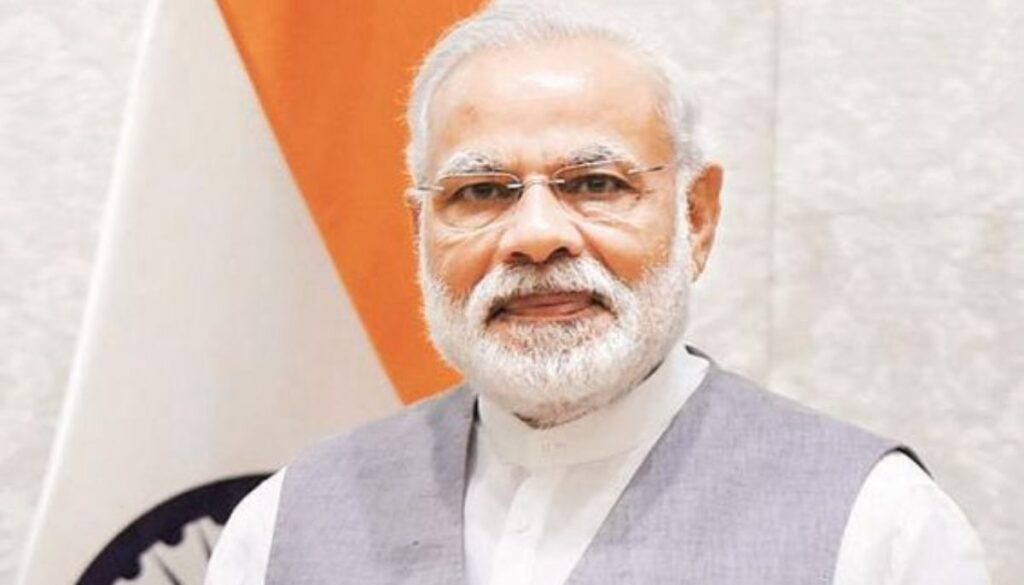Modi 3.0: A Blend of Continuity and Fresh Perspectives
As the sun set on a politically charged day in New Delhi, the nation’s eyes were fixed on Rashtrapati Bhavan, where history was in the making. Prime Minister Narendra Modi, a leader who has left an indelible mark on India’s political landscape, was poised to embark on his third term. The air buzzed with anticipation, not just for the reaffirmation of Modi at the helm but also for the unveiling of his new team—a cabinet that promised to be a tapestry of seasoned wisdom and dynamic fresh blood. This moment was more than a procedural formality; it was a testament to the enduring trust placed in Modi by the world’s largest democracy and a prologue to the next chapter of India’s growth story.

Historic Third Term
- Prime Minister Narendra Modi’s ascent to a third consecutive term stands as a monumental testament to his enduring appeal and the unwavering faith of the Indian electorate. The oath-taking ceremony at Rashtrapati Bhavan was nothing short of spectacular, befitting the historic nature of the occasion. The majestic edifice, with its storied halls and verdant gardens, served as the perfect backdrop for this momentous event. The ceremony was marked by pomp and circumstance, reflecting the grandeur of Indian democracy and the solemn promise of leadership that PM Modi embodies.
The Oath-Taking Ceremony
- The grandeur of Rashtrapati Bhavan was complemented by an air of solemnity and celebration as it played host to the oath-taking ceremony. The stately forecourt was a tableau of India’s rich political tapestry, with dignitaries and citizens alike bearing witness to the democratic rite. As President Droupadi Murmu took to the dais, her role as the constitutional head was a poignant reminder of the republic’s enduring institutions. With measured grace, she administered the oath to each minister, her words not just a formality but a binding contract between the leaders and the nation they serve. The atmosphere was charged with a sense of purpose and hope, as each oath echoed the collective aspirations of over a billion Indians.
The Cabinet Composition
- Modi 3.0’s cabinet is a mosaic of seasoned politicians and invigorating new entrants, reflecting a deliberate strategy to balance continuity with change. The council of 72 ministers is a blend of familiar faces and nine fresh ones, each chosen with an eye towards regional and demographic representation as well as administrative acumen. This diverse group is poised to infuse the government with both the wisdom gleaned from past terms and the innovative perspectives necessary to address contemporary challenges. The inclusion of new entrants is particularly noteworthy, signaling PM Modi’s commitment to evolving his team in response to the nation’s changing needs and aspirations.
Key Figures
- In a ceremony that was both a nod to tradition and a beacon of continuity, key figures of the Bharatiya Janata Party (BJP) stepped forward to take the oath, each name resonating with the party’s and nation’s collective aspirations. Rajnath Singh, a stalwart of the party, once again took the oath, his presence a reassuring signal of unwavering stability. Amit Shah, whose strategic acumen has been pivotal in shaping the party’s trajectory, reaffirmed his commitment to the nation’s service. Nitin Gadkari, with his pragmatic approach to infrastructure and development, promised to continue his mission of nation-building. These leaders, along with others who stood in line to serve the country, embodied the rich tapestry of experience that has become synonymous with Modi’s governance.
New Entrants
- Modi 3.0’s cabinet refresh introduces a cadre of new ministers, each bringing a unique blend of expertise and fresh perspectives to the governance table. Among them are individuals with diverse backgrounds ranging from seasoned administrators to accomplished professionals in various fields. Their inclusion reflects PM Modi’s vision of a government that mirrors the multifaceted nature of India itself. These new entrants are set to contribute significantly to their respective ministries, with potential impacts on policy-making and implementation that could shape the nation’s progress in the years to come.
Conclusion
- As the dust settles on the grandeur of the oath-taking ceremony, India stands at the cusp of a new era under Modi 3.0. The blend of continuity with the infusion of fresh perspectives in the cabinet heralds a governance ethos that is both rooted in proven strategies and receptive to innovative ideas. This balanced approach promises to steer India’s trajectory towards sustained growth, inclusive development, and a heightened stature on the global stage. With PM Modi at the helm, bolstered by a team that encapsulates experience and dynamism, the nation looks forward with optimism to the unfolding of a promising chapter in its democratic journey.










